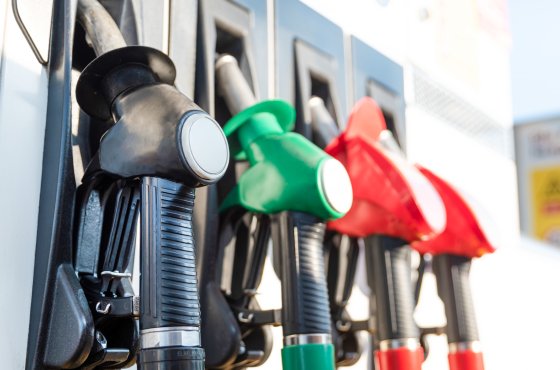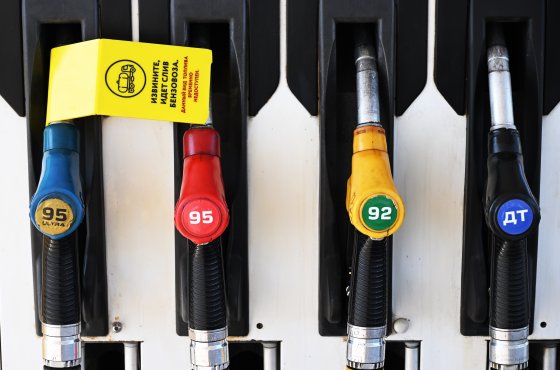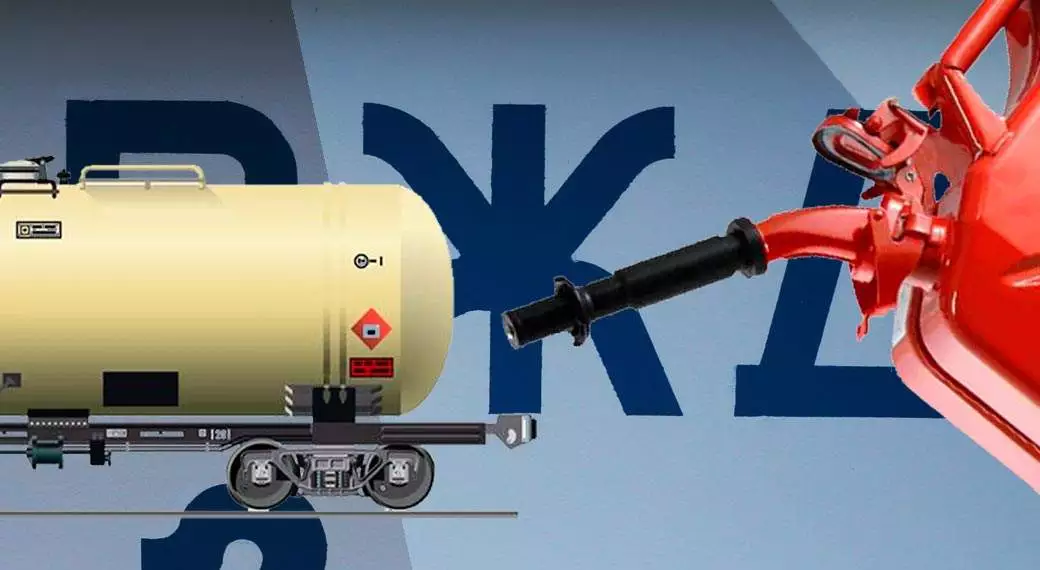Over the past three weeks, diesel fuel (DF) prices have surged by 10,000 rubles (17.6%) to reach 69,595 rubles per ton, marking a rapid increase since late August. The market is fast approaching the historical highs seen during the crisis in the autumn of 2023, when diesel prices peaked at 73,758 rubles per ton. Retail diesel prices have been rising quickly since late summer, increasing by 0.7% over the past four weeks; however, this growth (2.6%) has fallen short of the consumer inflation rate of 4.08%.
Amid ongoing issues with gasoline, which surpassed inflation at gas stations back in July and frequently set historical records in the market, diesel fuel has received comparatively little attention. Traditionally, autumn sees a decrease in gasoline demand and an increase in diesel consumption due to agricultural activities. Additionally, with the onset of October, the gradual transition to more expensive winter diesel varieties commences, which also contributes to rising prices.
The positive news is that while Russia produces only slightly more gasoline than is consumed domestically (prior to the export ban, 10-15% of output was exported), it produces diesel fuel at twice the domestic consumption level. Therefore, even with unexpected shutdowns of oil refineries (NPPs) for maintenance, a diesel shortfall is unlikely.
The retail price increment of diesel, which has reached 0.2% for the second consecutive week, aligns with high price expectations typically set in the autumn transition from summer to interseasonal and winter diesel fuel. Significant disruptions in the diesel market are not anticipated due to the substantial excess production capacity, more than sufficient to meet domestic market needs, according to Kirill Rodionov, author of the Telegram channel "High Voltage."
However, this does not imply that diesel prices will not continue to rise. Moreover, according to Sergei Frolov, managing partner at NEFT Research, the seasonal price increase for diesel has not yet commenced, as northern regions of the country have yet to begin their transition to winter diesel varieties. The expert underscores that due to the twofold excess in diesel production capacity, any continued price increases could easily be met by adjusting domestic supplies downwards by reducing exports.
In Russia, diesel production is double domestic consumption.
Nonetheless, for fuel producers, export sales are currently more profitable. Russia does not legislate a priority for domestic fuel supplies over exports. There are three potential ways to compel producers to sell diesel in Russia rather than export: negotiating with oil companies, increasing mandatory sales quotas on exchanges, or imposing an export ban. The first approach appears to have run its course; meetings with oil companies occur with enviable frequency, yet prices continue to rise. Current mandatory sales quotas on exchanges stand at 15% for gasoline and 16% for diesel. Reports have suggested that the Federal Antimonopoly Service (FAS) is considering raising gasoline quotas to 17%, but there has been no discussion about diesel. Furthermore, an increase of 1-2% in quota is unlikely to have a significant impact on market prices. This leaves the option of an export ban, but as it represents the primary revenue source for diesel producers, imposing such a ban would leave only the option of the damping mechanism, which would involve budget compensation for producers supplying fuel to the domestic market at lower prices compared to export rates.
According to Dmitry Gusev, Deputy Chairman of the Supervisory Board of the "Reliable Partner" association and a member of the expert council of the "Gas Stations of Russia" competition, an export ban on diesel is hardly feasible while production significantly exceeds domestic consumption. Such a ban would likely mean the shutdown of a substantial portion of refining capacity, as there would be nowhere to sell the surplus. Frolov, however, holds a different view, arguing that a ban could be considered if relevant authorities realize that the situation is getting out of control, though he sees it more as a contingency option.
The key question remains: what will happen to prices at gas stations? Both Frolov and Gusev are confident that retail diesel prices will eventually catch up with inflation. This is partly due to relatively high discounts offered on diesel fuel this past summer. Currently, these discounts are decreasing or being completely eliminated not only in retail but also in the B2B segment, as Gusev notes. This situation suggests that diesel margins are decreasing. Market conditions have worsened, and producers and sellers recognize that if they do not align with current inflation this year, they will likely face challenges in the future. Next year, they will again be assessed against the inflation figures from the beginning of the year.
Government discussions regarding adjustments to the damping mechanism may also contribute to price increases. Initially aimed at averting a crisis in the gasoline market, these adjustments will also affect diesel. The Ministry of Finance has agreed to increase the limit of allowable deviations in exchange price quotations for damping purposes by 10 points—to 20% for gasoline and 30% for diesel—from the indicative prices set by the state for the year (60,450 rubles per ton for gasoline and 57,200 rubles per ton for diesel). By current rules, the damping mechanism is nullified if the average monthly price for AI-92 gasoline (which serves as the basis for damping calculations) exceeds 66,495 rubles per ton, and for diesel, if it exceeds 68,640 rubles per ton. Raising the limit to 20% and 30% would set the upper thresholds at 72,540 and 74,360 rubles, respectively, ensuring oil producers continue to receive damping payments for gasoline. It is likely that these changes will be retroactive, as the maximum allowable prices for receiving damping payments were surpassed in August.
As noted by Sergey Tereshkin, director of the OPEN OIL MARKET fuel marketplace, diesel price thresholds have not yet been exceeded. Nevertheless, regulators still intend to raise them. Fuel suppliers are eager to boost revenue from diesel sales in the marketplace while retaining eligibility for subsidies, especially crucial now as operators of several NPPs will need to allocate additional funds to restore fuel infrastructure. Considering the seasonal demand for diesel in autumn and the transition to more expensive winter varieties, both in the marketplace and retail, diesel prices are expected to experience a more pronounced upward trend than gasoline prices, according to expert opinions.
Source: RG.RU




